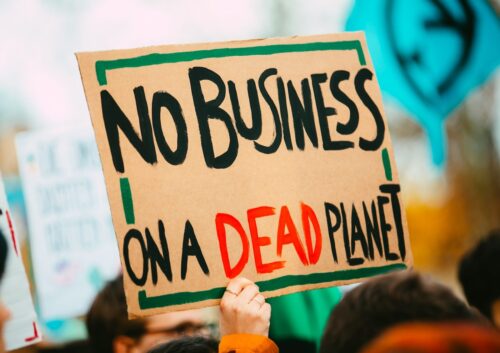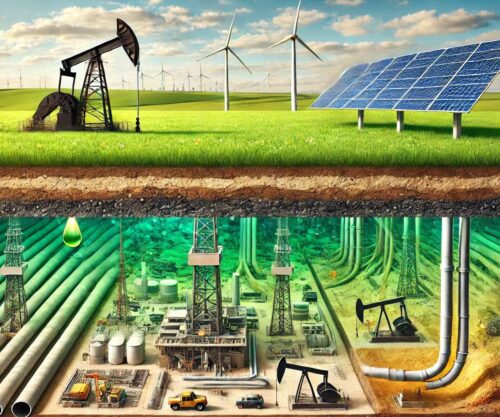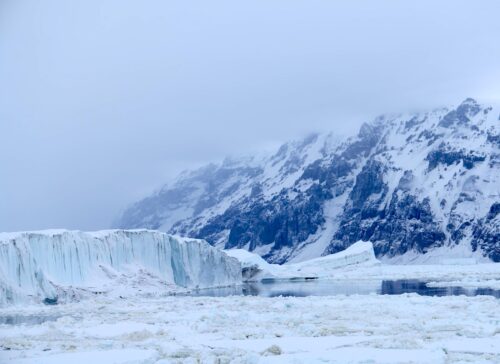
Al Jazeera posted an article titled “Climate-change-driven wildfires increasing air pollution across globe: UN,” which claims that wildfires are becoming more frequent due to climate change, and so air pollution from their smoke is as well. [emphasis, links added]
This is false, and it’s telling that they framed it in this way.
Wildfires are not getting worse, according to satellite data, and so air pollution due to them is also not getting worse.
Al Jazeera reported that wildfire smoke “made significant contributions to air pollution last year, according to the United Nations’ weather and climate agency[.]” This may be true; wildfires do produce air pollution, but what they say next takes this story from factual to false:
“In a report released on Friday, the World Meteorological Organization (WMO) said wildfires, likely to have been made more frequent by climate change, are releasing a ‘witch’s brew’ of pollutants that can end up wrecking air quality a continent away.”
Wildfires absolutely contribute to air pollution, and they may have caused significant pollution last year; however, the framing that this is getting worse due to climate change is completely false.
The article does not outright say that anyone tracked a long-term record of increasing air pollution due to wildfires. That is probably because there is no data to support that idea.
Indeed, toward the end of the article, they acknowledge that human interventions, especially in cities, to mitigate air pollution have had measurable and dramatic effects, with “long-term, a strong decrease” over time in recorded air pollution, according to the WMO global atmosphere chief.
Forest fire burn acreage in the US is down more than 90% since pre-industrial times, when atmospheric CO2 was below 300PPM. Basing policy around superstition is never a good idea.https://t.co/1toha5Asu5 https://t.co/dKM6iv1g7E pic.twitter.com/AvxWvFmuUB
— Tony Heller (@TonyClimate) June 4, 2024
Luckily, the claim of increasing wildfires causing more pollution is an easy bit of alarmist narrative to slap down.
For there to be an increase in global air pollution from wildfires over time due to global warming, there needs to be an increase in wildfires in the first place.
However, data shows that this is not the case. Satellite data from NASA shows that global burned acreage has significantly declined over the period of record since 1998. (See figure below)

According to that NASA data, despite the modest warming of the last several decades, wildfires have declined 24 percent since 1998.
As discussed in Climate at a Glance: Global Wildfires, European Space Agency (ESA) data also confirms this trend. Also, reconstructions of global historical records show that wildfires have been in a significant long-term decline since the early 1900s, at least.
One of the regions highlighted by Al Jazeera was the Amazon basin, in which last year the WMO reported the “biggest PM 2.5 surge.” But is this driven by an increase in wildfires? Again, no.
Data from Copernicus, a joint project of the ESA and NASA, show fires are trending down in Brazil, where most of the Amazon basin is located.

Climate Realism has shown many times that this is the case, especially globally, and yet alarmists in the media continue to promote the narrative that climate change is making wildfires worse.
They say “where there’s smoke, there’s fire,” but in this case, there is no fire, and thus no resulting smoke. Al Jazeera could have easily checked this data, but instead produced a misleading and alarming report.
Read more at Climate Realism



















There are several things wrong with this article, including the cherry-picked “wildland fire” graph that measures wildfires in acreage rather than fuel-types, and stops in the year 2000, at a time when western US wildfires and deadly smoke pollution began to increase dramatically.
If the estimate of 145 million acres burning annually is reasonably accurate for the 1500-1800 era, then very much of that area was grasslands, savannas, and berry fields established and maintained by Indian communities for thousands of years. These were truly “beneficial fires” that weeded and rejuvenated food and fiber crops and maintained established hunting grounds. The term “wildlands” was only recently adopted to describe these managed environments by the same university professors and government agencies that gave us WUIs, TEK, LSRs, and “managed wildfires.”
I completely agree with the article’s conclusion that the recent increases in wildfire frequency, severity, and extent — and related increases in deadly wildfire smoke along the east and west coasts of the US — have nothing to do with “Global Warming” or “climate change” (other than seasonal), but I think the data and statements leading to this conclusion are debatable and should be questioned, rather than accepted.
Much of the documented increases in forest fires and related smoke pollution have resulted in passive management of our public forests in the western US since 2000. I’ve researched and written extensively on these topics for the past 35 years, with a focus on western Oregon and northern California where much of these changes have taken place.
Here is my most recent popular article on Global Warming and western Oregon Wildfires, and an historical wildfire graph produced by Oregon Department of Forestry through 2022 that directly cites my research and largely contradicts Heller’s statement: http://nwmapsco.com/ZybachB/Articles/Magazines/Oregon_Fish_&_Wildlife_Journal/20220401_Global_Warming/Zybach_20220401.pdf
20230106_ODF_CenturyFireHistory_Poster-10.jpg
“The Independent”, Thursday 03 January 2013 (left leaning bias), had an article about Al Gore’s sale of his “Current TV”, which became “Al Jazeera”. I’m wondering if some of his influence lingers on.